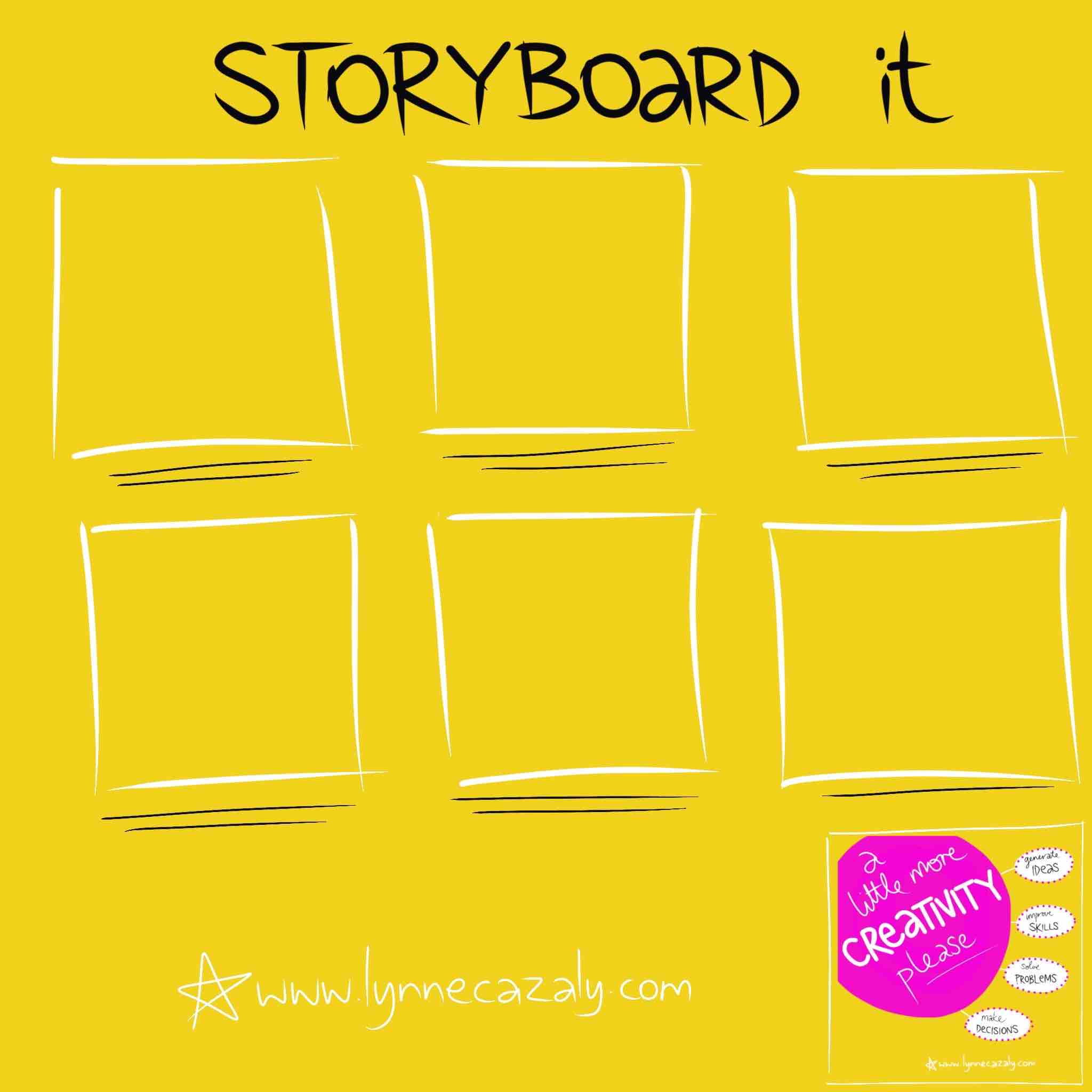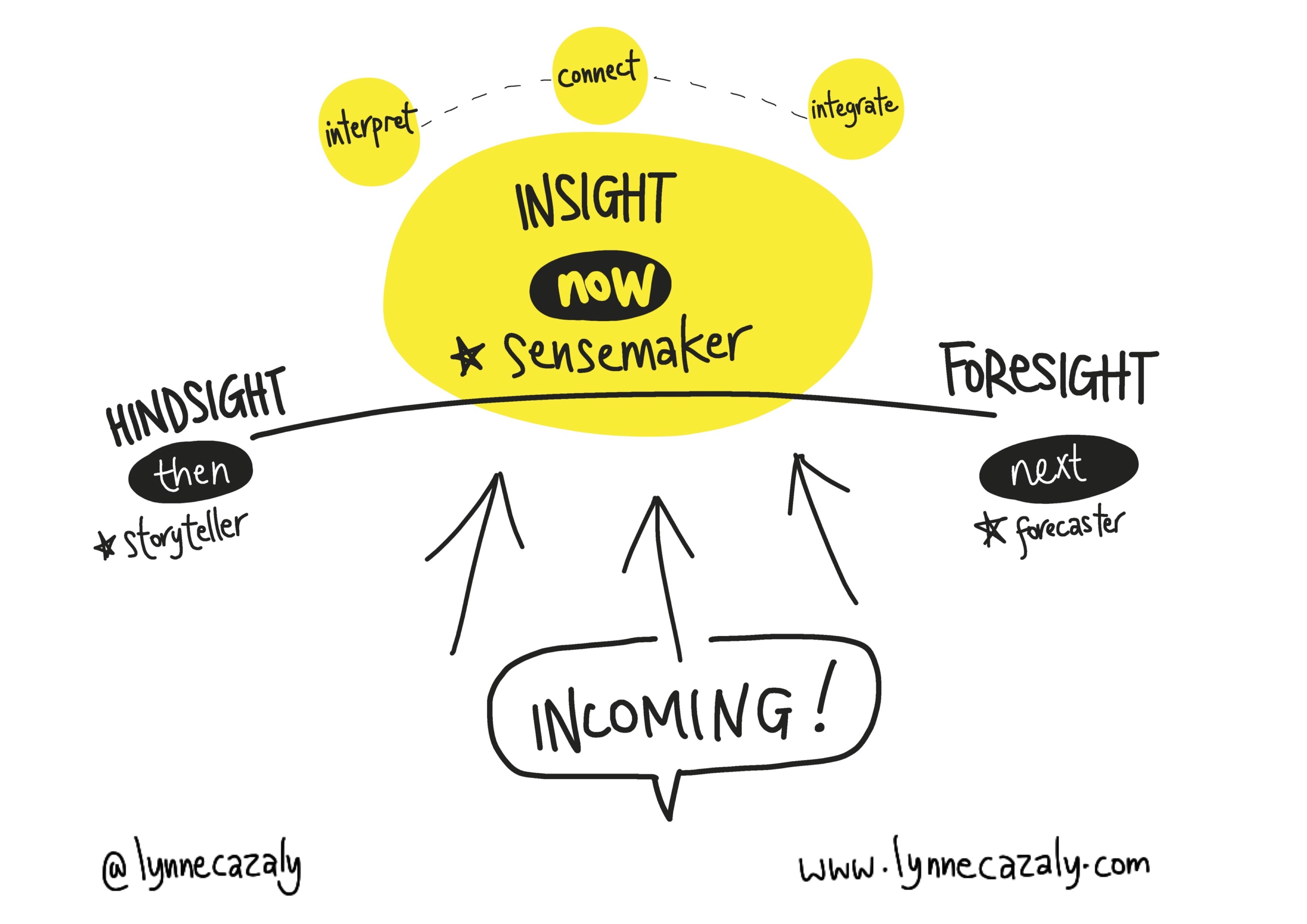When the world feels all upside down and its challenging to understand what's happening or why, it's often in hindsight that we're able to see what went on.
This is sense making at work. It's how we connect the dots and draw some conclusions from what was uncertain or complex.
With Sensemaking rated as a vital capability for the future of work as work keeps getting re-worked, we've got to look at human, helpful and effective ways to make sense - that don't involve drowning in fathoms of data.
In making sense, stories are critically important. Not so much the telling of stories, rather the hearing, the distilling and the getting to the essence. That's the sense part.
Even micro narratives, tiny little slivers of a story are worth grabbing and capturing. It could be a phrase, a statement, a couple of words, a slang term or a quote.
When people drop these little micro-gems into the conversation, look out, grab them and capture them. Reflect them. These will help you make sense.
It’s a little like how panning for gold might give you hundreds or thousands of little pieces of golden glitter, but no big nuggets. Yet it’s the mounting up of those little shimmers that can give you the right to say you’ve ‘struck gold’.
So don’t discount the little pieces of glitter, the little slivers of a story, the tiny segments or phrases or grabs. Together they can make some wonderful sense.
In sensemaking and making sense, you’ve got to tune in those listening skills to hear the slivers of stories; to listen to what people are saying and sharing with you… to capture those.
Don’t just wait for facts and data. Engage in the anecdotes, the stories, the tales and the telling.
In my earlier career, my first career, I worked in public relations. Oooh, don't throw tomatoes or boo and hiss. It was good PR. It was community relations. I worked in public health, education, government, training, media, sport. It was about helping people understand what was going on and how they could either get involved … or run the other way!
Whatever the topic, project, program of work or PR piece I was working on, we always had to craft key messages. When you watch someone present to the media, and if they've been media trained, they'll be delivering their content in sound bites and key chunks - those repeatable, printable, quotable quotes that the media like to broadcast. It's a short chunk of sweet loveliness on the topic. (Oh and at the bad end of the scale are those nothingness quotes that politicians like to sprout. Not those.)
The same can apply in communication, leadership and workplaces the world over. You need some sound bites and digestible chunks for your listeners and viewers to take in and understand - for your employees, teams and tribes to grab hold of.
Gather together the little slices, pieces, chunks and cues. Together they can give you incredible sense and help show what people are thinking, wondering, learning, sensing and making.
Collect the stories you hear - even the tiny little ones - capture them, visualize them, share them and reflect on them… put them together, for they will help you – and the people you’re working with - make sense.
 Wednesday, October 28, 2020 at 8:08AM
Wednesday, October 28, 2020 at 8:08AM 


















